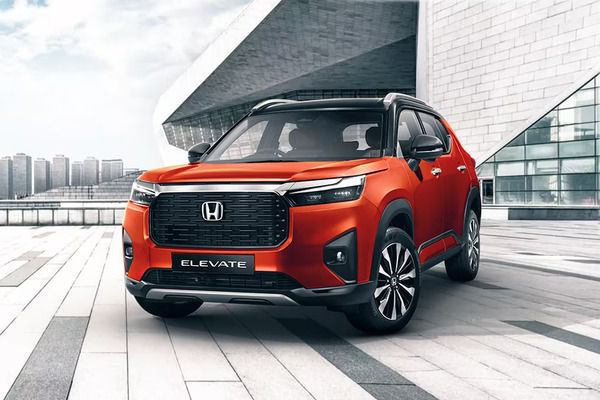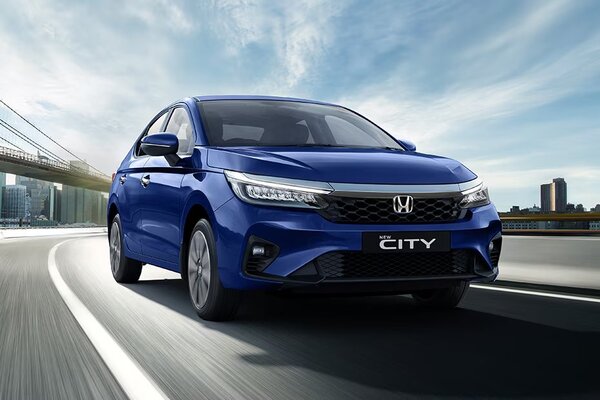Honda sees its future in air taxis, rockets and moon robots


Car and motorbike maker Honda Motor Co. is positioning itself for a vertical takeoff.
Also Read : Hyundai and Urban-Air Port plan flying taxi-hubs across 65 cities worldwide
The Tokyo-based company is embarking on efforts to field a new electric-hybrid air taxi, a robot with human-like hands that may one day toil on the moon and a reusable rocket to carry small satellites into space more economically.
Also check these Cars
Honda’s vision of how people will work, travel and spend leisure time in the future will help expand its business beyond cars, lawn mowers and motorcycles. The efforts are a key component of Honda’s “2030 Vision" to broaden the definition of mobility and to improve peoples’ daily lives.
The automaker, which also has a niche business in small planes, is a newcomer to the space industry, dominated today by established defense contractors such as Boeing Co. and well-funded upstarts such as Elon Musk’s SpaceX and Jeff Bezos’s Blue Origin. Its seven- or eight-passenger HondaJet has gained limited traction and accounts for a tiny fraction of the company’s revenue.
Honda also has struggled to keep up with the latest technology in its mainstay automotive business, partnering with General Motors Co. to develop electric vehicles using that larger company’s next-generation battery-pack technology.
The carmaker says all three areas of the expansive research and development road map overlap with Honda’s expertise, including propulsion, electrification, robotics, artificial intelligence and renewable energy, the company said Thursday.
“There is no other company that has all of these core technologies," spokesman Marcos Frommer said on a video briefing with reporters.
Air Taxis
Honda says current flying-shuttle designs that rely 100% on battery power will be too limited in range to meet market demand for travel as far as 250 miles (402 kilometers) and not just across large, congested cities, according to its research.
The company plans to begin flight tests in 2023 on a hybrid design that will couple a lithium battery with a gas-turbine generator to serve as a charger and extend the aircraft’s range. If management decides to proceed with development, Honda plans to have its craft certified by 2030.
In the 2040s, when Electric Vertical Takeoff and Landing (eVTOL) craft progress to a fully autonomous stage -- without a pilot on board -- Honda forecasts a market worth $269 billion annually. This would include emergency medical transport and logistics.
This market will need to function within a larger ecosystem of eVTOL ports, ground-based autonomous vehicles and computers that can adjust both passengers’ schedules and flight plans seamlessly to transport people, Frommer said.
Avatar Robots
Honda Robotics will continue refinements of its Asimo humanoid robot to reduce its size and increase capabilities.
The company expects that avatar robots will be used primarily as a remote surrogate to perform tasks, such as a paramedic controlling the robot to attend to an injured person, which Honda calls “4D, transcending time and space." In another scenario from the company, schoolchildren remotely occupy a fleet of robotic rover avatars on the moon’s surface, touring craters and other geographic features.
These human-controlled avatars will need sophisticated, multifingered hands powered by artificial intelligence to help provide more delicate and forceful grasping, Honda said. The Honda Avatar Robot will begin technology demonstrations by March 2024 and see “practical use" in the 2030s, the company said.
Space
Honda began work in late 2019 on the engineering requirements for a reusable rocket, the industry’s new paradigm given the success of SpaceX’s Falcon 9. Honda plans to develop a rocket to launch small satellites into low-earth orbit, another evolution that has energized the commercial space economy.
This, in turn, could lead to more connected machines -- everything from autos to appliances to utilities that are online -- and create new service and revenue opportunities.
Further out in space, Honda sees commercial promise in helping lunar explorers unlock the potential of frozen water on the moon. The company is working with the Japan Aerospace Exploration Agency (JAXA) to build a renewable energy system on the moon. This would break down water into its hydrogen and oxygen components, with Honda’s fuel-cell technology generating electricity. The oxygen also could used in living quarters and to provide hydrogen for fueling rockets, Honda said.
Honda isn’t the only Japanese carmaker imagining a presence on the moon. Toyota Motor Corp. and the Japan Aerospace Exploration Agency are working on a six-wheeled driverless lunar rover with the goal of putting it on the surface in 2029.
Honda also sees a role on the moon for robots to “minimize the risks astronauts will be exposed to and enable people to virtually enjoy the experience of being on the moon from Earth."








 1199 cc
1199 cc Petrol
Petrol



















